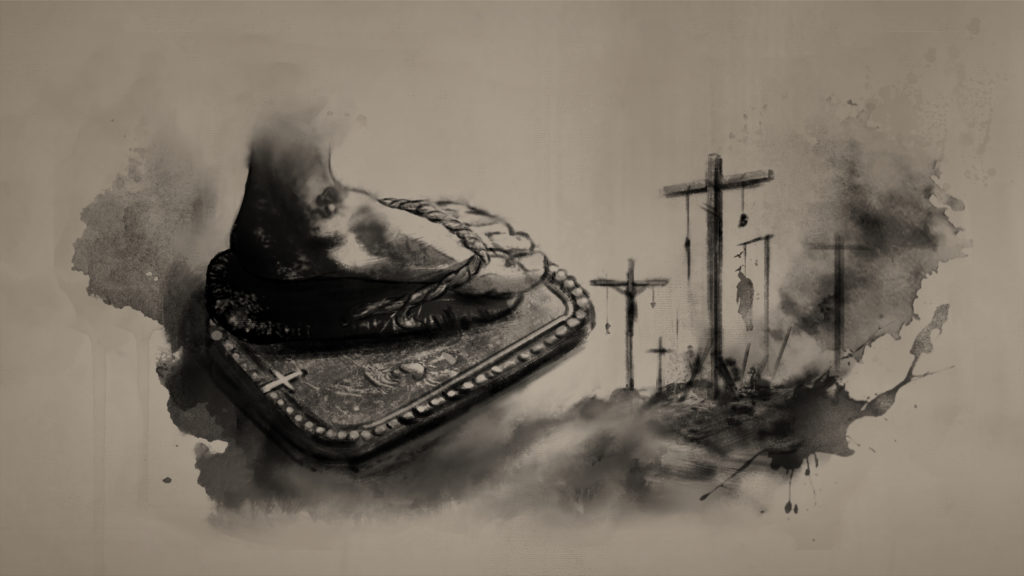
When most people think of early modern Japan, they picture a country completely closed off from the rest of the world. In reality, this was a period of great religious diversity and change in Japan that was largely influenced by outside forces. Christianity had been introduced to the country by Portuguese missionaries in the 16th century. By the early 17th century, there were an estimated 300,000 Christians in Japan. This made Christianity a significant minority in a country that was primarily Buddhist and Shinto.
Due partly to this rapid religious growth, the ruling Tokugawa Shogunate suspected that foreigners might be using Christianity as a tool to destabilize its government. It soon began to crack down on the religion. In 1612, Japanese officials issued an edict that effectively banned most foreigners and followers of Christianity from its borders. Over the next several decades, hundreds of Christians were imprisoned, killed for bounty, or forced to renounce their faith.
Different tactics were used to discourage the Japanese people from practicing Christianity during this time. One well-known strategy was the creation of fumi-e, coins that displayed the likeness of Jesus or Mary. The Japanese government made them and required individuals to step on them in order to demonstrate their denouncement of Christianity. However, the most notable strategy was providing a monetary incentive for turning in those of Christian faith to the law. This was highly successful—the reward was significant enough to motivate many into hunting down Christians independently. As a result, most Japanese Christians went into hiding and continued to practice in secret.
Over time, tensions rose in response to this religious persecution. Ultimately, this brought about a large-scale uprising in 1637 known as the Shimabara Rebellion. In this battle, thousands of Christians fought alongside allied ronin and peasants. They rebelled against the Shogunate and subsequently lost. Following their attempt to overthrow the government, all those who were involved and still alive were executed as punishment.
In Tale of Ronin, players will witness events leading up to the Shimabara Rebellion, meet followers of different religions, and may well encounter individuals who hunt suspected Christians for profit.